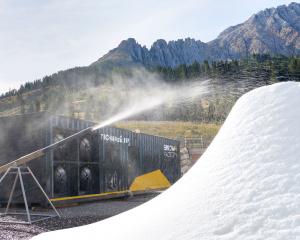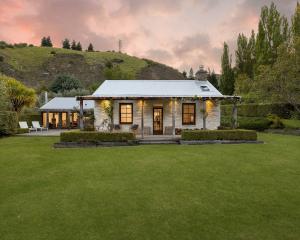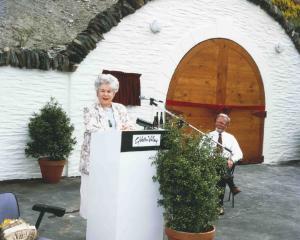
For four days this week several expert witnesses and legal counsel have argued the relative merits of the runway end safety area (resa) at a hearing in front of independent commissioners.
The hearing has been adjourned until later this month (see the Otago Daily Times, page 12 today for details) but Wakatipu tourism leaders told the Queenstown Times they would be amazed if Queenstown Airport Corporation Ltd's application to build a gravel fill on 6.4ha of land at the eastern end of the main runway did not go ahead.
The Civil Aviation Authority (CAA) has decreed the airport must have a minimum 90m wide and long safety area in place by the deadline of October 2011.
The area would have to extend out on a platform made from fill on the western bank of the Shotover River.
The fill platform would cost an estimated $10 million and take up to 27 months to complete.
However, parties differed on its environmental impacts and how secure the critical unformed eastern access road would be if the project stalled.
QAC chief executive Steve Sanderson said the airport was integral to the Queenstown Lakes community.
The airport facilitated and directly generated a gross output of $368 million last year.
"The consequence of not complying with resa requirements will most likely be the loss of international status for the airport.
International passengers arriving and departing directly to and from Queenstown have risen 16% in the last year and are now up at 62,276.
"The local economy would undoubtedly suffer from international passengers not being able to fly directly to Queenstown."
Marketing general manager Graham Budd said Destination Queenstown was about to invest significantly in the Australian market.
There would be huge ramifications if the safety area was not built and Queenstown airport was forced to become a domestic terminal, he said.
"If the extension didn't go ahead, there would be limits on the payloads for airlines which would then restrict the number of visitors and increase the costs to passengers.
"We're already facing severe competition from Japan and domestic Australian skifields. If Queenstown became a domestic airport, most international visitors would have to fly into Auckland or Christchurch and we would lose Australian passengers to other New Zealand locations."
Totally Tourism Ltd managing director Mark Quickfall was one of 15 tourism-related operators who submitted their unequivocal support for the safety area proposal.
He said access to Queenstown had been historically important to its growth and good air access was "absolutely vital".
"Safety is paramount and if we need to build the extension to meet CAA requirements, we should do it.
"Dust and noise concerns [by some opposing submitters] from construction trucks are understandable but, reading QAC submissions, they are taking a responsible approach and taking mitigating steps."
Mr Quickfall said tourism was flat-lining at the moment with long-haul markets likely to slow down and airline costs rising as fuel prices increased.
The global credit crunch was also causing potential visitors to take "staycations" instead.
"We should be doing everything we can to make sure Queenstown is an attractive destination and access is easy from Brisbane, Sydney and Melbourne."












